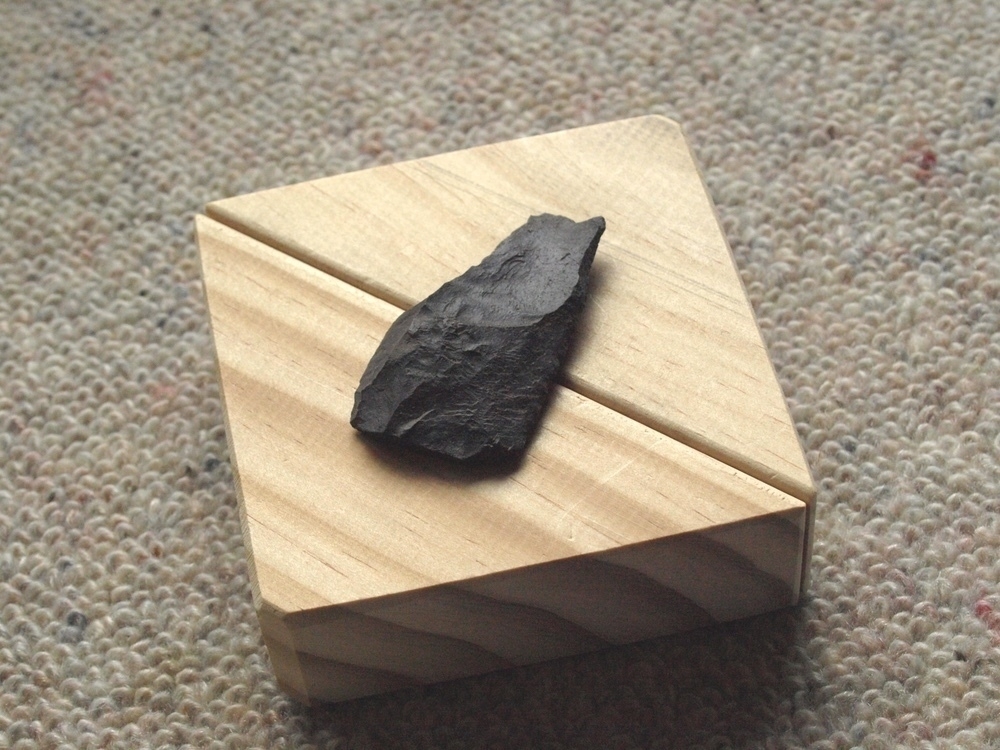…both of them made by humans.
This is the first:

(Apologies for forgetting to take the camera off 1600 ASA. Duh!)
It looks like some flake of rock, maybe volcanic, but its purpose is clear once picked up:

One summer, about 800 years ago, a group of people came up from the coast and camped in the hills of what would one day be called Central Otago. They brought with them rocks of a peculiar and rare type found around the naturally burning coalseams closer to the coast: rocks made of a cooled and somewhat glassified melted clay.
Where the hills' ridges narrowed to a waist they’d sometimes build a pit, and make a brush fence on either side. Then they’d hunt their prey down the ridge, possibly with the large-jawed dogs whose remains have been found in the region, and trap them in the pit.
And then they’d feast.
They were moa hunters. And this is a blade, possibly for a left-handed person, knocked out on the spot from those special rocks and used for skinning or butchering the large birds. Later, it was discarded; just one out of place rock chip among thousands of others on that hillside.
Hundreds of years later the land was ploughed for pasture, the mark of ages smoothed-over pits and ovens a clear black against the otherwise brown soil. A small boy could wander there, and did, finding many pieces of ancient rubbish.
I liked that I could find things once touched and shaped by the earliest inhabitants of the land.
This one in particular I liked because it was the only black one I ever found, and one of the most shaped (the few other shaped pieces I have are light grey, or brown; and the rest are just chips, the complement to something shaped that is lost). It feels nice in my hand, though it’s probably too blunt now to be much use, except maybe for skinning.
It’s been with me everywhere, even to the antipodes. And held in my hand, it reminds me of my other home, not far from that Central Otago hillside.